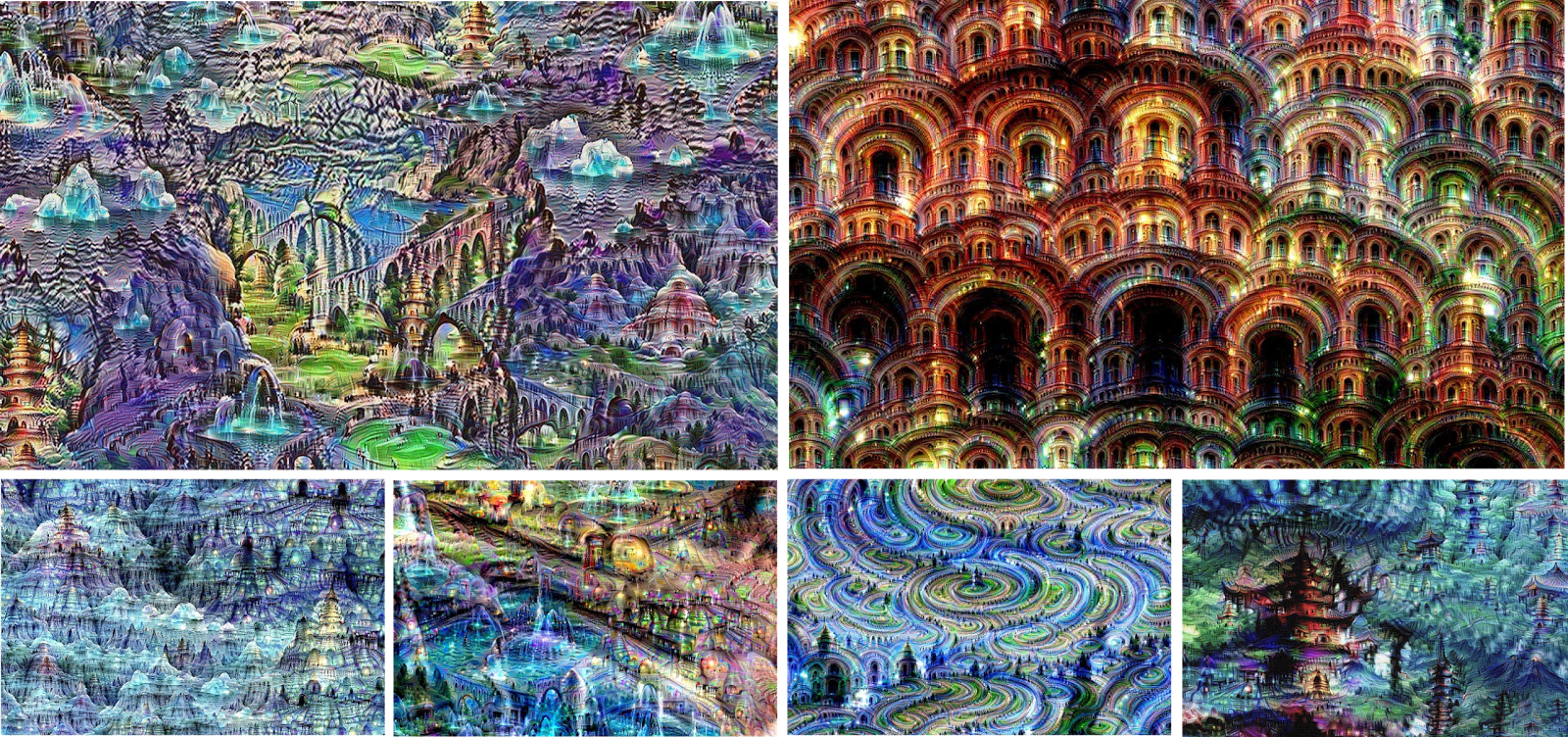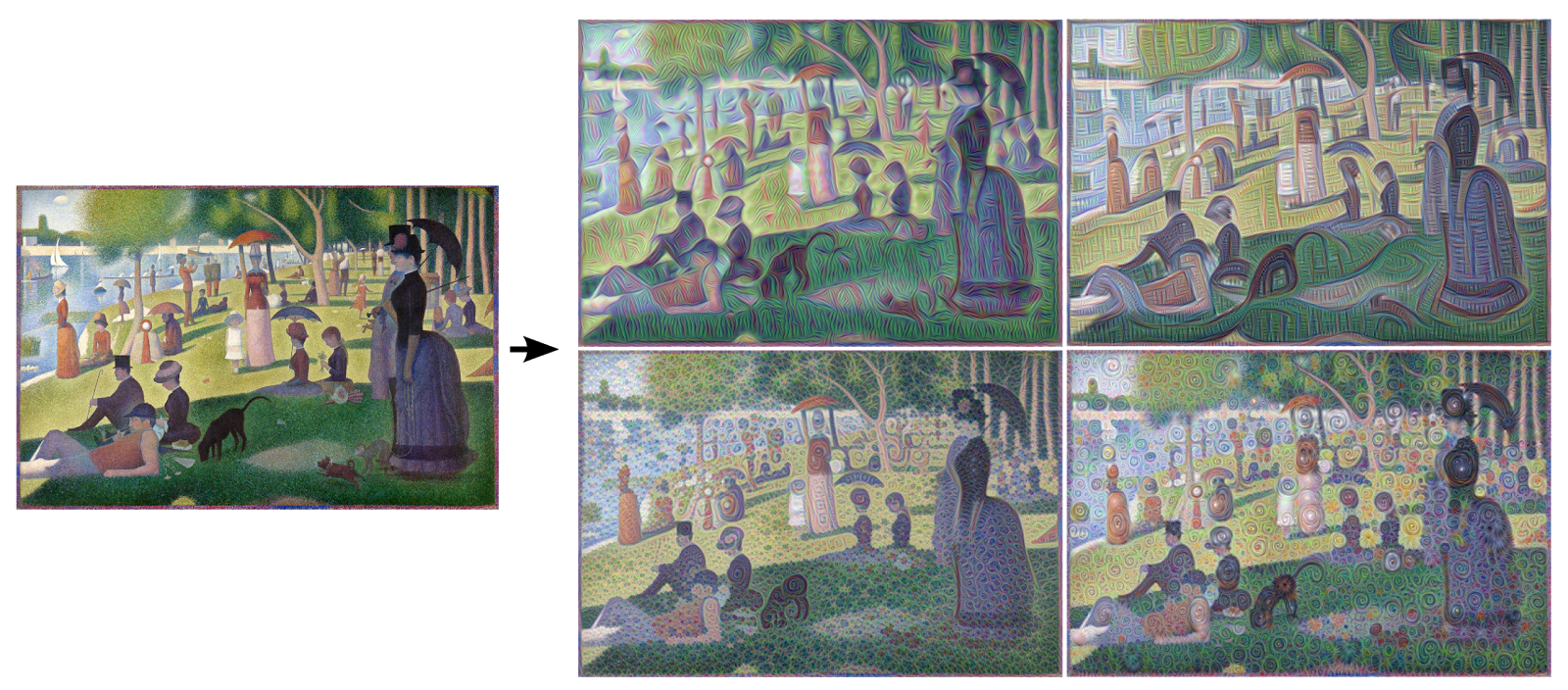Mr. Tea
Let's Talk About Ceps
I'm sure a few of you must have seen this already - could just as easily have gone in Art or Thought, but anyway:
http://googleresearch.blogspot.co.uk/2015/06/inceptionism-going-deeper-into-neural.html
Basically Google researchers have used neural net programs trained to pick out certain features, such as animal faces or buildings, and put them to work on an image containing none of these things in conjunction with an algorith to gradually turn parts of the image that look a tiny bit like the sought image into that image, and then iterated it many times. The results are incredible:


What I find amazing is how incredibly similar they look to some of the stuff you see when you're tripping. In fact it seems to back up a hunch I've had for some time: that a lot of the visual effects of psychedelics arise because they turn up to 11 the circuits in your brain that deal with pattern recognition and detecting streams of meaning in otherwise noisy signals, like how the random dirt on the wall in a nightclub toilet suddenly appears to be alive with slowly morphing faces.
Cool stuff happens even when they just train the program to pick out and exaggerate edges:

http://googleresearch.blogspot.co.uk/2015/06/inceptionism-going-deeper-into-neural.html
Basically Google researchers have used neural net programs trained to pick out certain features, such as animal faces or buildings, and put them to work on an image containing none of these things in conjunction with an algorith to gradually turn parts of the image that look a tiny bit like the sought image into that image, and then iterated it many times. The results are incredible:


What I find amazing is how incredibly similar they look to some of the stuff you see when you're tripping. In fact it seems to back up a hunch I've had for some time: that a lot of the visual effects of psychedelics arise because they turn up to 11 the circuits in your brain that deal with pattern recognition and detecting streams of meaning in otherwise noisy signals, like how the random dirt on the wall in a nightclub toilet suddenly appears to be alive with slowly morphing faces.
Cool stuff happens even when they just train the program to pick out and exaggerate edges:

